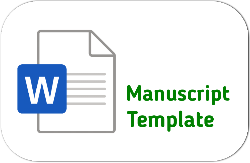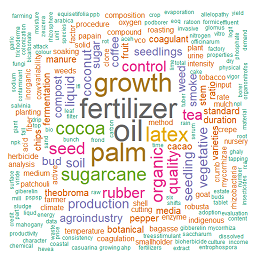Uji Efektivitas Ekstrak Kulit Manggis (Garcinia mangostana L.) terhadap Fusarium oxysporum pada Kecambah Kelapa Sawit
DOI:
https://doi.org/10.25181/jaip.v8i1.1390Keywords:
botanical fungicide, Fusarium oxysporum, oil palm nursery, pathogenAbstract
Fusarium oxysporum is a pathogen that causes wilt in oil palm and can cause oil palm sprout decay. The study aimed to determine the effectivity of mangosteen peel extract (Garcinia mangostana L.) in inhibiting the growth of Fusarium oxysporum in vitro and in vivo. The research was conducted in November 2017 to June 2018 at the Politeknik Negeri Lampung. The method used was a completely randomized design (CRD) consisting of 5 treatments, namely the concentration of mangosteen peel extract 0% (control), 15%, 30%, 45%,and 60%. Data were analyzed using analysis of variance (ANOVA) and further tests of mean values using the LSD test. The results showed that mangosteen peel extract affected the percentage of inhibitory zone extract in Fusarium oxysporum in vitro at concentrations of 15%, 30%, and 45% respectively at 25,92%, 29,06% and 35,95%. The treatment of mangosteen peel extract also affected the percentage of disease incidence and number of leaves in in vivo testing.Downloads
References
Agios, G. N. (2005). Plant Pathology (5th ed.). California (US): Elsevier Academic Press.
Anderson, J. B. (2005). Evolution of antifungal drug resistence: Mechanisms and pathogenfitness. Nature Reviews of Microbiology, 3, 547–556.
Balouiri, M., Sadiki, M., & Ibnsouda, S. K. (2016). Methods for in vitro evaluating antimicrobial activity: A review. Journal of Pharmaceutical Analysis, 6(2), 71–79. https://doi.org/10.1016/j.jpha.2015.11.005.
Fitriani, M. L., Wiyono, S., & Sinaga, M. S. (2019). Potensi kolonisasi mikoriza arbuskular dan cendawan endofit untuk pengendalian layu Fusarium pada bawang merah. Jurnal Fitopatologi Indonesia, 15(6), 228-238.
Hafizi, R., Salleh, B., & Latiffah, Z. (2013). Morphological and molecular characterization of Fusarium. solani and F. oxysporum associated with crown disease of oil palm. Brazilian Journal of Microbiology, 44(3), 959-968.
Horinouchi, H., Muslim, A., & Hyakumachi, M. (2010). Biocontrol of fusarium wilt of spinach by the plant growth promoting fungus Fusarium equiseti GF183. Journal of Plant Pathology, 92(150), 249–254.
Hutauruk, D., Suryanto, D., & Munir, E. (2016). Asai isolat bakteri kitinolitik Bacillus sp. BK17 pada media pembawa tanah gambut dan kompos janjang kelapa sawit dalam menghambat pertumbuhan jamur patogen Sclerotium rolfsii dan Fusarium oxysporum pada kecambah cabai. Jurnal Hama dan Penyakit Tumbuhan Tropika, 16(1), 61-70.
Hutauruk, D. S. (2018). Potensi bakteri kitinolitik NR09 pada beberapa media pembawa dalam menghambat pertumbuhan jamur patogen Sclerotium rolfsii dan Fusarium oxysporum pada benih cabai merah (Capsicum annuum L.). BIOLINK: Jurnal Biologi Lingkungan Industri Kesehatan, 4(2), 138-151.
Jose, C.P., C.R. Noemi., O.I. Marisol., Jasmin, and M. R. (2008). Medical properties of mangosteen (Garcia mangostana). Food and Chemical Toxicolology, 46(1), 3227–3239.
Juariyah, S., Tondok, E. T., & Sinaga, M. S. (2018). Trichoderma dan Gliocladium untuk mengendalikan penyakit busuk akar Fusarium pada bibit kelapa sawit. Jurnal Fitopatologi Indonesia, 14(6), 196-204.
Maleki, S., Seyyednejad, S. M., Damabi, N. M., & Motamedi, H. (2008). Antibacterial activity of the fluid Torillis leptophylla against some clinical pathogen. Journal of Biological Science, 11(9), 1286–1289.
Menezes, R. A. A. C. and M. (2006). Identification and pathogenic characterization of endophytic Fusarium species from cowpea seeds. Anais Da Academia Pernambucana de Ciência Agronômica, 3, 203–215.
Muksin, R., Rosmini, & Panggeso, J. (2013). Uji antagonisme Trichoderma sp. terhadap jamur patogen Alternaria porri penyebab penyakit bercak ungu pada bawang merah secara in-vitro. E-J. Agrotebis, 1(2), 140–144.
Mulyadi, M., Wuryanti, W., & Sarjono, P. R. (2017). Konsentrasi hambat minimum (KHM) kadar sampel alang-alang (Imperata cylindrica) dalam etanol melalui metode difusi cakram. Jurnal Kimia Sains dan Aplikasi, 20(3), 130. https://doi.org/10.14710/jksa.20.3.130-135.
Nugroho, B. (2013). Efektivitas Fusarium oxysporum F.sp. Cepae avirulen dalam mengendalikan penyakit layu Fusarium pada cabai. Jurnal Agri Sains, 4(7), 65–75.
Nuryani, W., Yusuf, S., Djatnika, I., & Marwoto, B. (2016). Pengendalian penyakit layu Fusarium pada Subang Gladiol dengan pengasapan dan biopestisida. Jurnal Hortikultura, 21(1), 40-50.
Pahan, I. (2007). Panduan Lengkap Kelapa Sawit. Jakarta: Penerbit Swadaya.
Rifai, N., Syaukat, Y., Gumbira-Sa’id, E., & Pertanian, D. T. I. (2014). Dampak pengembangan produk turunan minyak sawit terhadap peningkatan ekspor produk minyak sawit ke pasar Amerika Serikat. Jurnal Agro Ekonomi, 32(2), 107-125.
Simatupang, G. W. (2015). Eksplorasi Dan Uji Patogenisitas Fusarium spp. Asal Rizosfer Kelapa Sawit Di Kebun Percobaan Cikabayan, Bogor, Jawa Barat.
Smith, S. N. (2007). An overview of ecological and habitat aspects in the genus Fusarium with special emphasis on the soil-borne pathogenic forms. Plant Pathology Bulletin, 16, 97–120. Retrieved from http://140.112.183.1/cpps/pdf/16-3/p097-120.pdf.
Wulandari, M. (2015). Uji Daya Antifungi Ekstrak Biji, Daun dan Kulit Pohon Tanjung (Mimusops elengi Linn.) terhadap Patogen Fusarium moniliforme Sheldon pada Biji Jagung. Retrieved from http://repository.unej.ac.id/bitstream/handle/123456789/65672/Ainul Latifah-101810401034.pdf?sequence=1.
Downloads
Published
How to Cite
Issue
Section
License
Authors who publish with Jurnal Agro Industri Perkebunan agree to the following terms:
Authors retain copyright and grant the Jurnal Agro Industri Perkebunan right of first publication with the work simultaneously licensed under a Creative Commons Attribution License (CC BY-SA 4.0) that allows others to share (copy and redistribute the material in any medium or format) and adapt (remix, transform, and build upon the material for any purpose, even commercially) with an acknowledgment of the work's authorship and initial publication in Jurnal Agro Industri Perkebunan.
Authors are able to enter into separate, additional contractual arrangements for the non-exclusive distribution of the journal's published version of the work (e.g., post it to an institutional repository or publish it in a book), with an acknowledgment of its initial publication in Jurnal Agro Industri Perkebunan. Authors are permitted and encouraged to post their work online (e.g., in institutional repositories or on their website) prior to and during the submission process, as it can lead to productive exchanges, as well as earlier and greater citation of published work.


























